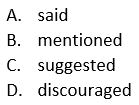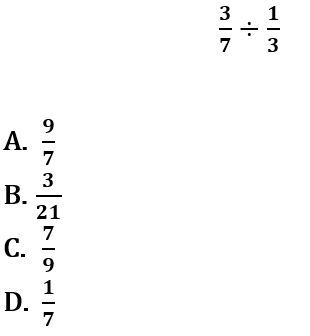Sample i-Ready Diagnostic Practice Test
Check out our i-Ready Diagnostic Practice Test!
Wondering what kinds of questions your child will be asked on the i-Ready Diagnostic? The i-Ready Diagnostic contains multiple choice Math and Reading questions.
The Math portion of the test will focus on the following:
- Algebra and Algebraic Thinking: The Algebra and Algebraic Thinking domain assesses students’ ability to comprehend, analyze, and solve algebraic problems. It emphasizes the development of algebraic reasoning and fluency through a focus on the following content areas:
- Expressions and Equations: Students will be tested on their ability to simplify, evaluate and manipulate expressions, and solve equations and inequalities.
- Functions: Students must demonstrate an understanding of various types of functions, their properties, and their applications in real-world situations.
- Patterns and Relationships: This content area evaluates students’ ability to recognize, analyze, and extend patterns, as well as to describe the relationships between variables.
- Geometry: The Geometry domain evaluates students’ understanding of geometric concepts and their ability to apply these concepts to solve problems. Key content areas include:
- Geometric Shapes and Properties: Students must demonstrate knowledge of basic geometric shapes, their properties, and relationships between them.
- Transformations, Congruence, and Similarity: Students are expected to understand transformations (e.g., reflections, rotations, translations) and how they relate to congruence and similarity.
- Coordinate Geometry: This content area assesses students’ ability to plot points on a coordinate plane, calculate distances, and use geometric concepts to analyze relationships between points, lines, and shapes.
- Measurement and Data – The Measurement and Data domain focuses on students’ ability to measure, represent, and analyze data. The key content areas are:
- Units of Measurement: Students must demonstrate proficiency in selecting appropriate units of measure, converting between units, and estimating measurements.
- Data Representation and Interpretation: This content area evaluates students’ ability to represent data using various formats (e.g., tables, charts, graphs), and analyze data to draw conclusions and make predictions.
- Geometric Measurement: Students are expected to apply geometric concepts to measure length, area, and volume, as well as to solve real-world problems involving measurement.
- Numbers and Operations – The Numbers and Operations domain assesses students’ understanding and application of number concepts and computational skills. Content areas include:
- Number Sense: This content area evaluates students’ understanding of different number types (e.g., whole numbers, fractions, decimals) and their properties.
- Operations: Students must demonstrate proficiency in performing basic operations (addition, subtraction, multiplication, and division) with various types of numbers.
- Ratios, Proportions, and Percents: Students are expected to understand and apply concepts of ratios, proportions, and percents to solve problems.
The Reading portion of the test will focus on the following:
Reading Comprehension portion of the test, specifically focusing on five key sections: Literature, Comprehension: Informational Text, High-Frequency Words, Phonics, and Phonological Awareness. By understanding the content areas and objectives of each section, students and educators can better prepare for the test and optimize learning outcomes.
- Comprehension: Literature (K-8) section assesses students’ ability to read, analyze, and interpret literary texts. This section focuses on the following content areas:
- Literary Elements and Techniques: Students must demonstrate an understanding of elements such as plot, character, setting, theme, and point of view, as well as literary techniques such as symbolism, irony, and figurative language.
- Text Analysis and Inference: This content area evaluates students’ ability to analyze the structure and organization of texts, make inferences, and draw conclusions based on textual evidence.
- Comparing and Contrasting: Students are expected to compare and contrast different texts or elements within a single text, identifying similarities and differences in themes, characters, and other aspects.
- Comprehension: Informational Text (K-8) – The Comprehension: Informational Text section evaluates students’ ability to read and comprehend non-fiction texts. Key content areas include:
- Text Structure and Organization: Students must demonstrate an understanding of the different types of informational text structures (e.g., chronological, cause/effect, problem/solution) and how they are organized.
- Main Idea and Supporting Details: This content area assesses students’ ability to identify the main idea of a text, as well as to locate and analyze supporting details.
- Text Features: Students are expected to use text features such as headings, captions, charts, and graphs to enhance their understanding of the information presented in a text.
- High-Frequency Words (K-2 only; 3-8 depending on child’s performance) – The High-Frequency Words section tests students’ knowledge of commonly used words in the English language. This section evaluates the following content area:
- Word Recognition: Students must demonstrate their ability to accurately and fluently read high-frequency words in isolation and in context.
- Phonics (K-2 only; 3-8 depending on child’s performance) – The Phonics section assesses students’ understanding of the relationship between letters and sounds, as well as their ability to decode words. Content areas include:
- Letter-Sound Correspondence: Students must demonstrate knowledge of the sounds represented by individual letters and letter combinations.
- Decoding: This content area evaluates students’ ability to apply phonics skills to decode words, including regular words, irregular words, and multi-syllabic words.
- Phonological Awareness (K-1 only; 2 depending on child’s performance) – The Phonological Awareness section tests students’ ability to recognize and manipulate the sounds in spoken words. Key content areas include:
- Rhyme and Alliteration: Students must demonstrate an understanding of rhyming words and alliteration, and their ability to identify and produce words that share the same sounds.
- Syllable Awareness: This content area assesses students’ ability to recognize and count syllables in spoken words.
- Phoneme Awareness: Students are expected to identify, segment, blend, and manipulate individual sounds (phonemes) in spoken words.
Here are five examples.
IMPORTANT: While the i-Ready Diagnostic sample practice questions shown on this page are representative of what your child will see on the exam, they aren’t taken directly from the actual i-Ready Diagnostic that is being administered this year.
i-Ready Diagnostic Test Practice
i-Ready Sample Practice Question #1
Which word does not rhyme?

i-Ready Sample Practice Question #2
How much money is shown below?

i-Ready Sample Practice Question #3
My coach recommended that everyone drink a lot of water before our game because it was going to be hot.
Which choice can replace “recommended” in this sentence?

i-Ready Sample Practice Question #4
Evaluate:

i-Ready Sample Practice Question #5
Fifteen is subtracted from a number. The difference is divided by 4. The quotient is 7. What is the number?

See if TestingMom.com supports your child’s test by your school district. If you don't see your child's school district listed, check with us! We have practice for other tests as well.



Tell us about your experiences
10 Responses
285585@pylusd.org
pretty good but I am looking for a kind of fourth grade Questions if you have any of those
TestingMom.com
Hi,
Please reach out to our Parent Success Team at 877-609-6203 or help@testingmom.com. They are happy to help you find more questions for the i-Ready test.
chrisandaug@gmail.com
2nd graders don’t know division
skudratov2012@gmail.com
Hello, my name is Sofia. I am in 6th grade and I found out that my reading score is in the 90th percentile and my math score is in the 96th percentile. Do you have any suggestions for where to find reading comprehension questions or any sites that can help me improve my score for reading and math? (I already tried your site.) Thank you!
TestingMom.com
Congratulations on your impressive iReady scores! You’re doing exceptionally well in both reading and math. For reading comprehension, you might consider exploring websites like Testing Mom, ReadTheory or Newsela. They offer a variety of articles with comprehension questions to help you practice.
For math, use Testing Mom to provide in-depth lessons and exercises that can further sharpen your skills.
Keep up the excellent work, and don’t hesitate to reach out if you have more questions!
Laela Mehari
I passed the math test and would like stuff harder.
TestingMom.com
Once you become a member, you’ll have access to many different tests AND grade levels (through 8th). If the practice questions are too easy, just try the next grade level up!
Grant
Hi, my name is Grant. I am in 6th and scored 9th grade because I did so many I-Ready lessons. Did you have 9th-grade and 10th-grade practice sheets? (Math) I only found K-8. Also, where can you find 7th and 8th-grade reading sheets?
TestingMom.com
Hi Grant!
TestingMom.com only provides practice questions for grades K through 8th grade. Our Reading questions for 7th and 8th grade can be found at: https://members.testingmom.com/test-prep/iready-diagnostic/practice-questions
Happy Studies!
r2o2m2n@yahoo.com
Very nice. You helped me out a lot. THANK YOU!!!!